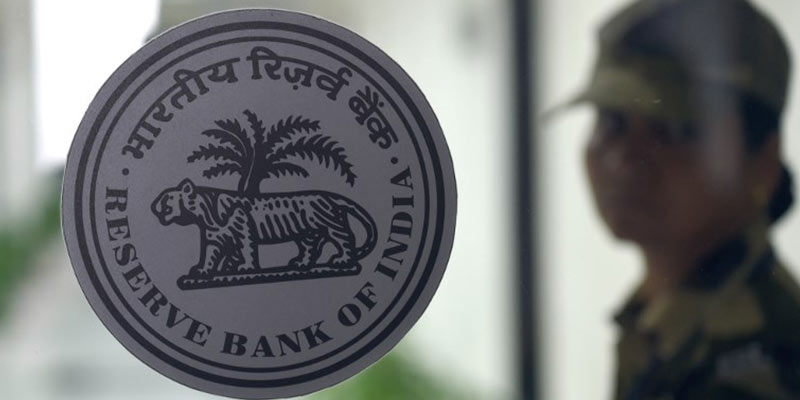- India
- Oct 30
RBI governor Shaktikanta Das gets 3-year extension
• The government has extended the term of Reserve Bank of India (RBI) governor Shaktikanta Das by three years.
• The decision to give him an extension was taken by the Appointments Committee of the Cabinet headed by Prime Minister Narendra Modi.
• Das was appointed as RBI’s governor on December 11, 2018, for a period of three years after the resignation of his predecessor Urjit Patel.
• An official order dated October 28 said the government has reappointed Das as the governor of the central bank for a period of three years beyond December 10, 2021, that is till December 2024.
• The extension is longer than the norm of a two-year term in the last two decades.
• He will be the fifth governor to get a tenure this long. Usually, RBI governors are given a five-year term.
• If completed, he will be the longest-serving governor after Sir Benegal Rama Rau, who was in office for 7 years and 197 days between July 1, 1949, and January 14, 1957.
Reserve Bank of India
• The Reserve Bank of India (RBI) is India’s central banking institution, which controls the monetary policy.
• It commenced its operations on April 1, 1935 in accordance with the Reserve Bank of India Act, 1934.
• Following India’s Independence, the RBI was nationalised on January 1, 1949.
• The RBI has four zonal offices at Chennai, New Delhi, Kolkata and Mumbai. It has 31 offices throughout India.
• As the central bank of India, RBI is an independent apex monetary authority which regulates banks and provides important financial services like storing of foreign exchange reserves, control of inflation, monetary policy report.
• A central bank is a vital financial apex institution of an economy and the key objectives of central banks may differ from country to country. Still, they perform activities and functions with the goal of maintaining economic stability and growth of an economy.
• The RBI plays an important part in the development strategy of the country.
• The general superintendence and direction of the RBI is entrusted with the 21-member central board of directors.
• It consists of the governor, four deputy governors, two finance ministry representatives, 10 government-nominated directors to represent important elements of India’s economy, and four directors to represent local boards headquartered at Mumbai, Kolkata, Chennai and New Delhi.
Main functions of RBI
Monetary Authority: Formulates, implements and monitors the monetary policy.
Objective: Maintaining price stability while keeping in mind the objective of growth.
Regulator and supervisor of the financial system: Prescribes broad parameters of banking operations within which the country’s banking and financial system functions.
Objective: Maintain public confidence in the system, protect depositors’ interest and provide cost-effective banking services to the public.
Manager of foreign exchange: Manages the Foreign Exchange Management Act, 1999.
Objective: To facilitate external trade and payment and promote orderly development and maintenance of foreign exchange market in India.
Issuer of currency: Issues and exchanges or destroys currency and coins not fit for circulation.
Objective: To give the public adequate quantity of supplies of currency notes and coins and in good quality.
Developmental role: Performs a wide range of promotional functions to support national objectives.
Regulator and supervisor of payment and settlement systems: Introduces and upgrades safe and efficient modes of payment systems in the country to meet the requirements of the public at large.
Objective: Maintain public confidence in payment and settlement system
Banker to the government: Performs merchant banking function for the central and the state governments. Also acts as their banker.
Banker to banks: Maintains banking accounts of all scheduled banks.
Issuing of currency
• RBI is the sole body that is authorised to issue currency in India. The bank also destroys the same when they are not fit for circulation.
• All the money issued by the central bank is its monetary liability. The central bank is obliged to back the currency with assets of equal value, to enhance public confidence in paper currency.
• The objectives are to issue bank notes and give public adequate supply of the same, to maintain the currency and credit system of the country to utilise it to its best advantage, and to maintain the reserves.
• For printing of notes, the Security Printing and Minting Corporation of India Limited (SPMCIL), a wholly owned company of the government of India, has set up printing presses at Nashik, Maharashtra and Dewas, Madhya Pradesh.
• The Bharatiya Reserve Bank Note Mudran Private Limited (BRBNMPL), also has set up printing presses in Mysore in Karnataka and Salboni in West Bengal. In all, there are four printing presses.
• For minting coins, SPMCIL has four mints at Mumbai, Noida, Kolkata and Hyderabad.
Manorama Yearbook app is now available on Google Play Store and iOS App Store


